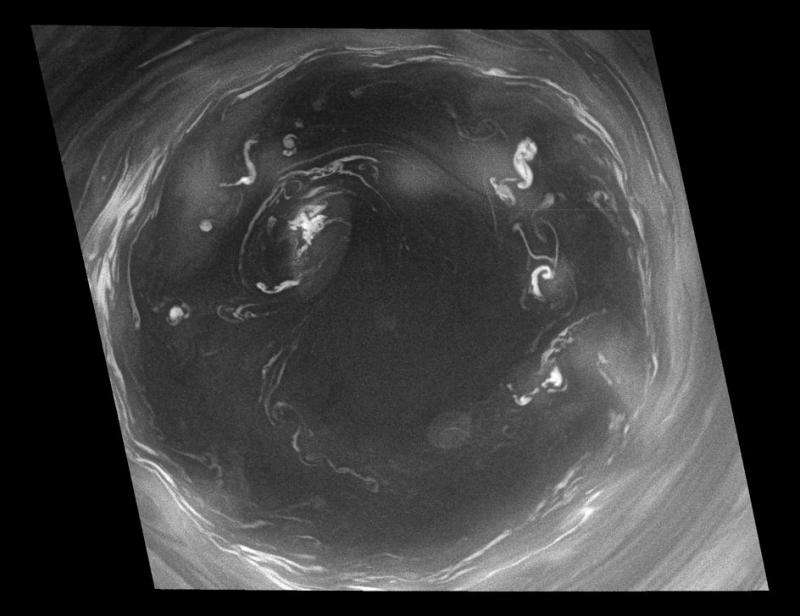Image: The eye of Saturn's storm

Sitting at Saturn's south pole is a vortex of monstrous proportions. The dark 'eye' of this feature is some 8000 km across, or about two thirds the diameter of Earth.
This image is 10 times more detailed than any previous picture of the polar vortex and shows a level of detail inside the eye that was not previously observable. Earlier images showed towering clouds around the edge of this vortex, but inside the air was thought to be mostly transparent. Here, however, a multitude of features is revealed.
Clouds are produced by convection – warm, rising gases in the atmosphere of Saturn. As they reach higher, and therefore colder, layers of the atmosphere, the gases condense and appear as clouds. At the 10 o'clock position, a stream of upwelling gas has created its own smaller vortex inside the larger one.
This view is an adjusted composite of two frames taken by the Cassini spacecraft on 14 July 2008. Cassini actually captured the scene from an oblique angle, some 56º below the plane of Saturn's rings – a far cry from the view directly over the south pole. The orbiter was about 392 000 km from the planet at the time, yet Cassini's camera still provided a resolution of 2 km per pixel.
Towering eye-walls of cloud are a distinguishing feature of hurricanes on Earth. Like earthly hurricanes, the eye of this storm is composed of warmer gas than the surroundings. However, whereas hurricanes are powered by warm water and move across the surface of our planet, this vortex has no liquid ocean at its base and remains fixed to Saturn's south pole.
Round, swirling vortices are part of the general circulation in the atmospheres of all four giant, outer planets, and Cassini has spied many mobile ones rolling through Saturn's clouds at other latitudes. While vortices are often informally referred to as storms, scientists generally reserve that term for bright, short-lived bursts of convection that punch though the clouds, often accompanied by lightning.
In addition to being a thing of beauty, the vortex provides astronomers with a way to look deep into the planet's atmosphere.
Provided by European Space Agency





















